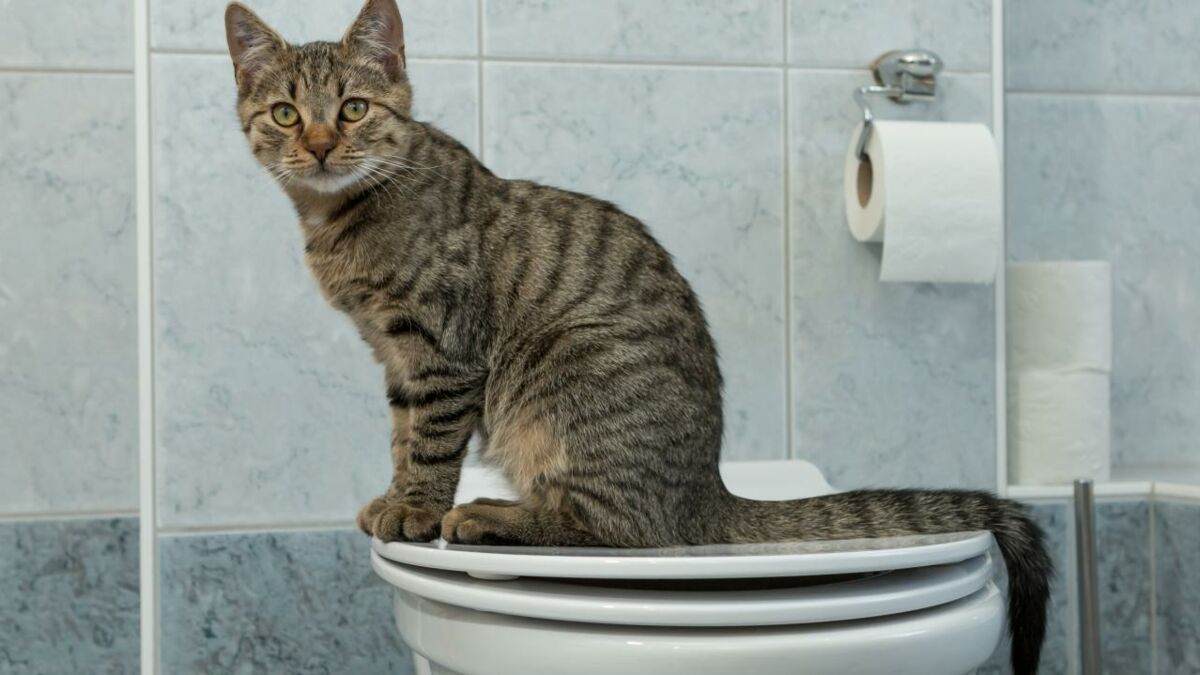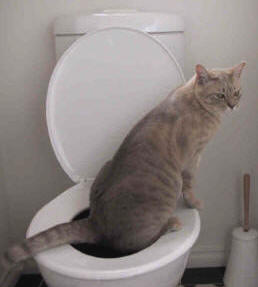My Hazards of Animal Waste in the Toilet
My Hazards of Animal Waste in the Toilet
Blog Article
We've stumbled on this post pertaining to Can You Flush Dog and Cat Poo Down the Toilet? directly below on the web and reckoned it made good sense to share it with you here.

When it concerns taking care of waste, specifically animal waste, many individuals commonly resort to the convenient option of flushing it down the commode. Nevertheless, this relatively simple solution can have serious consequences for the atmosphere and public health. In this post, we'll check out why flushing pet waste down the toilet is a bad idea and give alternate approaches for appropriate disposal.
Intro
Correct waste disposal is essential for preserving ecological sustainability and public health. While it may seem harmless to flush animal waste down the commode, it can lead to various concerns, both for the atmosphere and human health.
Threats of flushing pet waste
Environmental effect
Flushing pet waste presents harmful bacteria and pathogens into rivers, which can adversely influence water ecological communities. These microorganisms can pollute water sources and damage marine life, interrupting delicate ecosystems.
Public health worries
Animal waste consists of damaging microorganisms such as E. coli and Salmonella, which can position severe health dangers to people. Flushing pet waste down the commode can contaminate water products, resulting in the spread of illness and infections.
Alternatives to flushing
As opposed to flushing animal waste down the commode, there are several different disposal methods that are more eco-friendly and hygienic.
Composting
Composting pet waste is a green means to dispose of it. By composting, raw material is broken down into nutrient-rich soil, which can be made use of to feed gardens and plants.
Garbage dump disposal
Taking care of animal waste in a landfill is another option. While not as eco-friendly as composting, it is a safer alternative to flushing, as it stops the contamination of water sources.
Family pet garbage disposal systems
There are customized family pet garbage disposal systems offered that safely and hygienically deal with animal waste. These systems often use enzymes to break down waste and eliminate odors.
Actions to correct animal waste disposal
To make certain proper disposal of animal waste, comply with these actions:
Scooping and nabbing waste
Frequently scoop and bag animal waste using naturally degradable bags. This protects against waste from infecting the setting.
Utilizing marked waste bins
Dispose of bagged animal waste in designated waste containers, such as compost containers or garbage dump bins. Stay clear of flushing it down the toilet in any way expenses.
Cleaning up litter boxes and pet locations consistently
Regularly tidy can and pet dog locations to stop the buildup of waste and bacteria. Use pet-safe cleaning items to maintain health.
Advantages of proper disposal approaches
Taking on correct disposal approaches for pet waste supplies a number of advantages:
Reduced environmental pollution
Appropriate disposal approaches minimize the risk of environmental pollution, safeguarding rivers and communities from contamination
Decreased danger of water contamination.
By avoiding flushing pet waste down the toilet, the danger of water contamination is considerably decreased, protecting public health.
Enhanced sanitation and hygiene
Appropriate disposal techniques advertise much better cleanliness and health, developing a safer setting for both human beings and animals.
Final thought
Finally, flushing animal waste down the toilet is damaging to the environment and public health. By taking on alternate disposal methods and adhering to correct waste management techniques, we can minimize the adverse influence of pet waste and contribute to a cleaner, much healthier planet.
What To Do With Dog Poo – The Do's And Don'ts Of Disposing Of more info Faeces
Dog poo bins
Some councils provide dedicated dog waste bins in popular dog-walking areas that can take dog poo that has been bagged but you can legally dispose of dog waste in any public litter bin, as long as it is securely bagged. This also applies to your wheelie bin at home.
Do not flush
Water companies do not recommend flushing dog faeces down the toilet because certain parasites can survive the water processing treatment and are potentially harmful to humans. You should also never consider flushing dog poo that has been bagged down the toilet as the bags will not break down and instead create severe blockages in the sewage system.
In the woods
The Forestry Commission promotes a ‘stick and flick’ method for dealing with waste in the woods. This means finding a stick and using it to flick any poo from off the path so that it is out of the way of other walkers. You could also bury it as long as it is not in an area where there might be livestock.
Livestock
Parasites found in dog poo can be transmitted to livestock if they inadvertently eat infected faeces that has been left on grazing land. This could result in the death of sheep or abortion in cattle so you should always make sure you pick up your dog’s waste in fields where livestock could be present.

Regularly tidy can and pet dog locations to stop the buildup of waste and bacteria. Use pet-safe cleaning items to maintain health.
Advantages of proper disposal approaches
Taking on correct disposal approaches for pet waste supplies a number of advantages:
Reduced environmental pollution
Appropriate disposal approaches minimize the risk of environmental pollution, safeguarding rivers and communities from contamination
Decreased danger of water contamination.
By avoiding flushing pet waste down the toilet, the danger of water contamination is considerably decreased, protecting public health.
Enhanced sanitation and hygiene
Appropriate disposal techniques advertise much better cleanliness and health, developing a safer setting for both human beings and animals.
Final thought
Finally, flushing animal waste down the toilet is damaging to the environment and public health. By taking on alternate disposal methods and adhering to correct waste management techniques, we can minimize the adverse influence of pet waste and contribute to a cleaner, much healthier planet.
What To Do With Dog Poo – The Do's And Don'ts Of Disposing Of more info Faeces
Dog poo bins
Some councils provide dedicated dog waste bins in popular dog-walking areas that can take dog poo that has been bagged but you can legally dispose of dog waste in any public litter bin, as long as it is securely bagged. This also applies to your wheelie bin at home.
Do not flush
Water companies do not recommend flushing dog faeces down the toilet because certain parasites can survive the water processing treatment and are potentially harmful to humans. You should also never consider flushing dog poo that has been bagged down the toilet as the bags will not break down and instead create severe blockages in the sewage system.
In the woods
The Forestry Commission promotes a ‘stick and flick’ method for dealing with waste in the woods. This means finding a stick and using it to flick any poo from off the path so that it is out of the way of other walkers. You could also bury it as long as it is not in an area where there might be livestock.
Livestock
Parasites found in dog poo can be transmitted to livestock if they inadvertently eat infected faeces that has been left on grazing land. This could result in the death of sheep or abortion in cattle so you should always make sure you pick up your dog’s waste in fields where livestock could be present.

Hopefully you enjoyed our topic on Don't Flush Your Pets Poo Down The Loo, Vet Warns. Thanks a lot for taking a few minutes to read our blog post. Liked our article? Please quickly share it. Help someone else locate it. Kudos for being here. Revisit us soon.
Prices & Booking Report this page